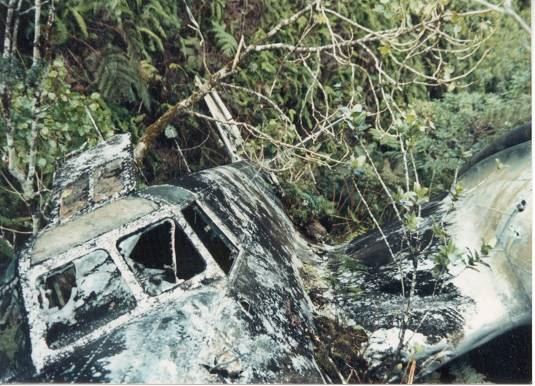Nāhuku (the protuberances) is a lava cave, or more commonly called a lava tube.
Lava tubes are natural conduits through which lava travels beneath the surface of a lava flow. Tubes form by the crusting over of lava channels and pāhoehoe flows. When the supply of lava stops at the end of an eruption or lava is diverted elsewhere, lava in the tube system drains downslope and leaves partially empty conduits beneath the ground. (USGS)
One of the most photographed lava tubes is Nāhuku in the Hawaiʻi Volcanoes National Park. It was found in 1913 by Lorrin Andrews Thurston (July 31, 1858 – May 11, 1931,) a local newspaper publisher, a lawyer, politician and businessman.
Thurston was born and raised in the Kingdom of Hawaiʻi, grandson of the first Christian missionaries to Hawaiʻi. He played a prominent role in the overthrow of the Hawaiian Kingdom that replaced Queen Liliʻuokalani with the Republic of Hawaiʻi.
But this story is about a cave in Volcano, not politics.
Thurston first visited Kīlauea in 1879 at the age of 21 with Louis von Tempsky. Thurston wrote that “we hired horses in Hilo and rode to the volcano, from about eight o’clock in the morning to five in the afternoon.” (NPS)
Ten years later Thurston’s first mark upon the Volcano landscape appeared. In 1889, using his position as Minister of the Interior, he oversaw the construction of an improved carriage road from Hilo to Volcano.
The road was completed in 1894 allowing four-horse stages to transport visitors from Hilo to Volcano in seven hours. This feat would greatly increase the number of people able to view the volcano at Kīlauea. (NPS)
The cave/lava tube he later found is also known as Keanakakina (Cave of Thurston – keana meaning cave and kakina the Hawaiian name for Thurston.)
“On Aug. 2nd a large party headed by LA Thurston explored the lava tube in the twin Craters recently discovered by Lorrin Thurston, Jr. Two ladders lashed together gave comparatively easy access to the tube and the whole party, including several ladies, climbed up.”
“No other human beings had been in the tube, as was evidenced by the perfect condition of the numerous stalactites and stalagmites. Dr. Jaggar estimated the length of the tube as slightly over 1900 feet. It runs northeasterly from the crater and at the end pinches down until the floor and roof come together…” (Thayer, Kempe)
Thurston and George Lycurgus (Uncle George) were instrumental in getting the volcano recognized as Hawaiʻi Volcanoes National Park. Starting in 1906, the two were working to have the Mauna Loa and Kilauea Volcanoes area so designated. In 1912, geologist Thomas Augustus Jaggar arrived to investigate and joined their effort.
Jaggar had tried to lead several expeditions to the top of Mauna Loa in 1914 but was unsuccessful due to the elevation (13,678 feet) and the harsh conditions: rough lava, violent winds, noxious fumes, shifting weather, extreme temperatures and a lack of shelter, water and food. (Takara)
On August 1, 1916, President Woodrow Wilson signed the country’s 13th National Park into existence – Hawaiʻi National Park. At first, the park consisted of only the summits of Kīlauea and Mauna Loa on Hawaiʻi and Haleakalā on Maui.
Eventually, Kīlauea Caldera was added to the park, followed by the forests of Mauna Loa, the Kaʻū Desert, the rain forest of Olaʻa and the Kalapana archaeological area of the Puna/Kaʻū Historic District.
On, July 1, 1961, Hawaiʻi National Park’s units were separated and re-designated as Haleakalā National Park and Hawaii Volcanoes National Park.
OK, back to Nāhuku.
This 500-year old, 600-foot long (with ceilings between 10 and 30-feet) lava tube is accessed via a short trail down, through and around back to the starting point (overall, it’s about 1/3-mile and takes about 20-30-minutes.) (The lava tube available for viewing is about 600-feet, the actual tube is approximately 1,500-feet.)
It is one of the very few readily-accessible lava caves/tubes for folks to see in Hawaiʻi. The cave has two openings used as an entrance/exit for the trail. The primary entrance is reached via a bridge. The cave/tube is lit with electric lights and has a flat rock floor.
The main entrance of the cave is near the top of the side wall of a closed depression. Its location is close to the margin of the Kilauea Iki section of the present-day Kilauea caldera-crater complex. This closed depression has the Hawaiian name Kaluaiki. (Halliday) The other entrance is a ceiling hole, caused by roof collapse much after the cave had cooled. (Kempe)
Hawaiʻi Volcanoes National Park is worth seeing, and a stop at Nāhuku (Thurston Lava Tube) is worth making, even if you have seen it a million times before. Enjoy this and other day hikes in the Park.


























































